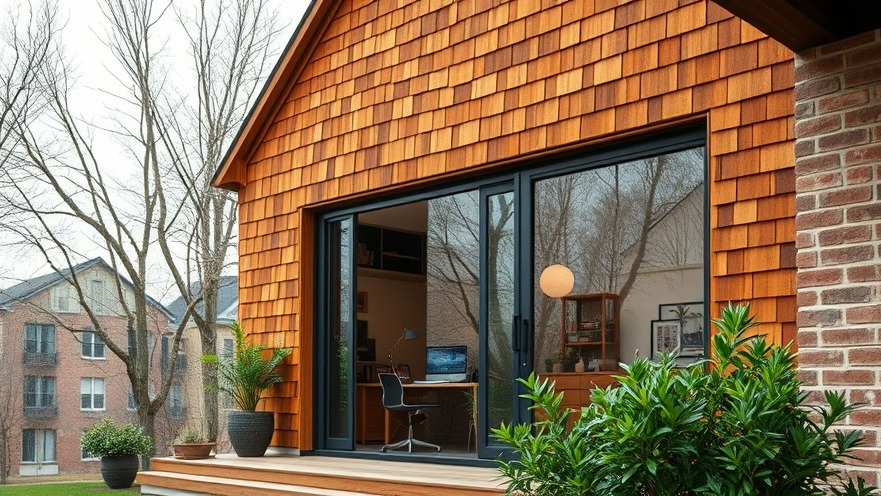
Embracing Nature: The Benefits of the Hairy Shingle Aesthetic
James Grayley Architecture has brilliantly merged contemporary design with traditional elements in Church Cottage’s latest extension. The eye-catching “hairy shingle exterior” isn’t just a nod to the region’s architectural history; it symbolizes a growing trend among digital nomads who increasingly seek to harmonize their workspaces with nature. By creating structures that reflect local flora and materials, architects enhance not only the aesthetic appeal but also the mental well-being of the inhabitants. For remote workers, this natural integration can transform a workspace into a sanctuary—a place that inspires creativity and reduces stress through natural beauty.
The Importance of Space in Remote Work
For digital nomads, space is not just a luxury—it's a necessity. As director James Grayley notes, the previous configuration of Church Cottage made it challenging for family and friends to gather comfortably. The new living, dining, and kitchen area offers ample space for social interaction, which is crucial for maintaining a balanced life while working remotely. A well-designed space encourages productivity, and an inviting environment helps combat the loneliness that can come with working from home.
Material Choices That Reflect Wellness
The materials selected for this project contribute significantly to the health-centric ethos of the design. Suffolk red bricks and oak shingles not only invoke a rustic charm but also improve air quality and acoustics within the home. Earthy and natural, these materials foster a pleasant atmosphere conducive to creativity and focus. For individuals working remotely, incorporating similar materials can enhance a workspace, making it feel more like part of the environment rather than just a separate office.
Landscape as Inspiration for Productivity
The wildflower garden on the extension roof provides a unique opportunity to connect with nature while working. Walking outside or simply gazing at greenery has been shown to improve concentration and productivity, a vital boon for remote workers. By blurring the lines between indoor and outdoor spaces, Grayley’s design illustrates how important these elements are for mental well-being. Buyers of new homes and remote workers alike should consider how access to green spaces can invigorate their productivity.
Creating Multifunctional Spaces at Home
In today’s world, creating multifunctional spaces is paramount, especially for those who operate from home. The open-plan design of Church Cottage's extension highlights this idea: a kitchen, dining area, and living set together provide versatility and privacy when needed. Such designs are not just esthetically pleasing; they are also practical. Implementing these ideas can help anyone working from home, creating distinct zones for office work and relaxation.
Design Insights: Rethinking Your Workspace
In conclusion, the principles embodied in the Church Cottage extension can inform how we rethink our own spaces at home. Digital nomads should consider natural materials, open areas for social gathering, and connections to surrounding landscapes when designing their workspaces. This attention to design and functionality allows one to maintain a healthy work-life balance while enriching creativity.
As you embark on your working-from-home journey, remember that age-old design principles can provide invaluable insights. Whether building from the ground up or simply redecorating, look to nature as your guide—your workspace deserves to be a sanctuary that supports your productivity and wellness.
Feeling inspired to elevate your workspace? Take action by assessing your surroundings—natural light, chosen materials, and space dynamics can profoundly impact your work life.
 Add Row
Add Row  Add
Add 




Write A Comment